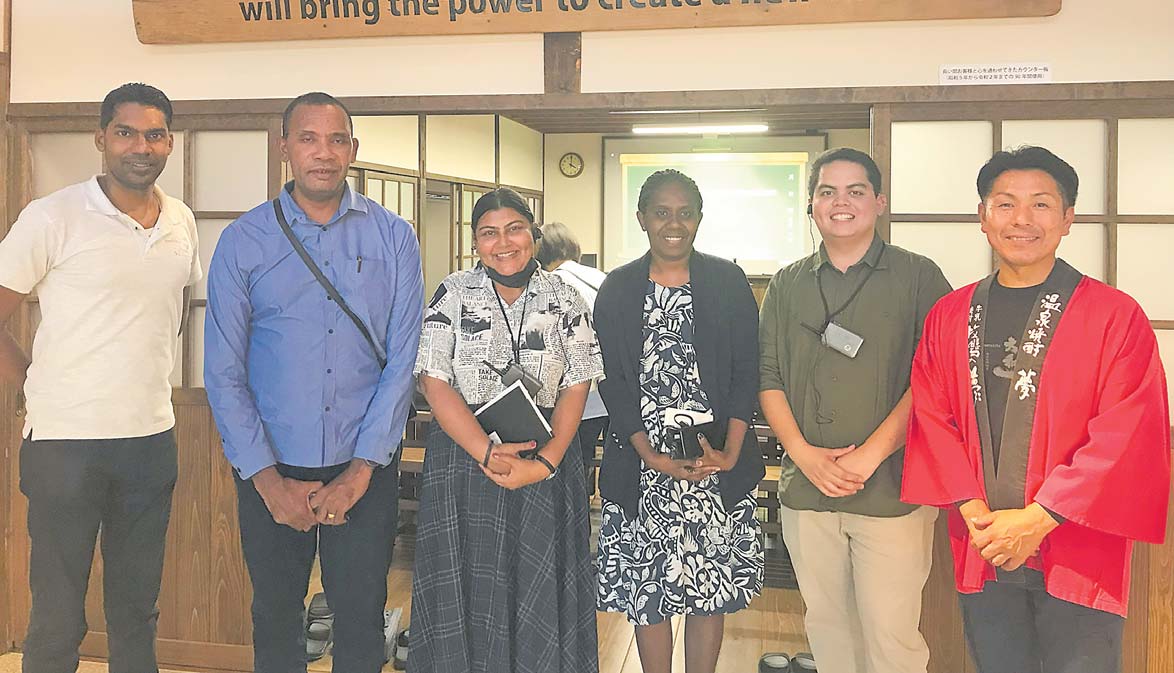Prior to visiting Kumamoto, a quick Google search showed me exactly what I was in for on the way to this stunning prefecture.
Last week, I shared my experiences in Osaki.
After we bade farewell to this idyllic town, we were whisked away from Kagoshima prefecture on a two-hour journey to neighbouring Kumamoto.
Gradually, the lush fields melted away as urban infrastructure came into the picture.
Today, Kumamoto is a thriving prefecture where tourism, business and leisure blend without much difficulty.
Yet, the picture-perfect destination has had to brave tumultuous times to get to where it is today.
Upon our arrival, we met officials of Hitoyoshi City, who relayed to journalists the experiences the residents faced in the flood disaster that swept through the city in 2020.
Residents lost their homes and businesses, and more than 70 lives were lost in this calamity.
But if there’s one thing I’ve learnt on this entire trip, it is that the Japanese are not only resilient, they also learn from experiences and use that to enhance preparedness.
Now, with the efforts of the public and private sector, the city implemented its Disaster Prevention Section, which led to the creation of an emergency alert lighting system on a central bridge.
The project on Mizunote Bridge cost over 27m yen ($F412,182) and now serves two purposes.
Firstly, it is a tourist attraction for the city and, secondly because it is connected to water sensors, it acts as a way of warning residents of any adverse flooding.
The bridge has LED lights, which change colour based on the river’s water levels.
White lights indicate normal conditions, yellow signifies rising levels and a need to take precautions, and red means residents must evacuate.
Officials say they are aware that not all residents can actually see the lights, however, they can keep track of water levels from their homes through the internet or via television.
People have also been encouraged to start the evacuation process even before the lights turn red.
And now, it is a system that has worked well since it was installed.
To better understand the impacts of the disaster, we visited Hitoyoshi Onsen Nabeya, one of the city’s premier Japanese ryokan (hot springs hotel), which sits just by the riverside.
The onsen has more than 50 spring sources in the town, and about 25 public bath houses.
Proprietress Mineko Tomita informed the journalists that in 2020, torrential rains caused the nearby Kuma River to overflow.
The main building, which has seven floors, had the first floor completely flooded and the hotel was forced to close for about nine months.
After that, COVID hit, and the opening was put on the backburner while renovations took place before its grand reopening in June this year.
And it is truly stunning.
We were privileged to have a meal at this terrific inn, and kudos to the chef for a culinary feast that was a treat for the senses.
A hearty meal later, we visited the Yamatoichi Shuzomoto, a sake brewery established in 1952 that produces and sells a wide range of shochu, liqueurs and seasonings.
Chief brewer Kenji Sakoda explained to the group that the company used handcrafted distillation to create original products such as onsen shochu (hot spring shochu), and milk shochu.
This business also suffered greatly during the flood.
The brewery was inundated by floodwaters (about 3 metres) that caused substantial damage to equipment and tanks used to store raw sake.
The situation was so dire that Mr Sakoda admitted they didn’t know where to begin.
However, they were able to make it with the support of friends, family and the community.
We were also given the chance to taste the different varieties of shochu.
The types we tried ranged in alcohol content – the highest being about 35 per cent.
It was my first time to taste shochu and something I was really looking forward to.
As for the taste, the varieties were crisp, smooth and had hints of sweetness that settled easily on the palate.
I’m glad we didn’t end up having a lot because I might have gotten drunk off just one glass!
Overall, our first day in Kumamoto was exhilarating.
It is a prefecture that still bears the scars of a torrid past, as an even greater disaster hit the area in 2016.
Next week, we’ll travel to Aso and learn more about the 2016 earthquakes and recovery efforts that have rebuilt the city.



